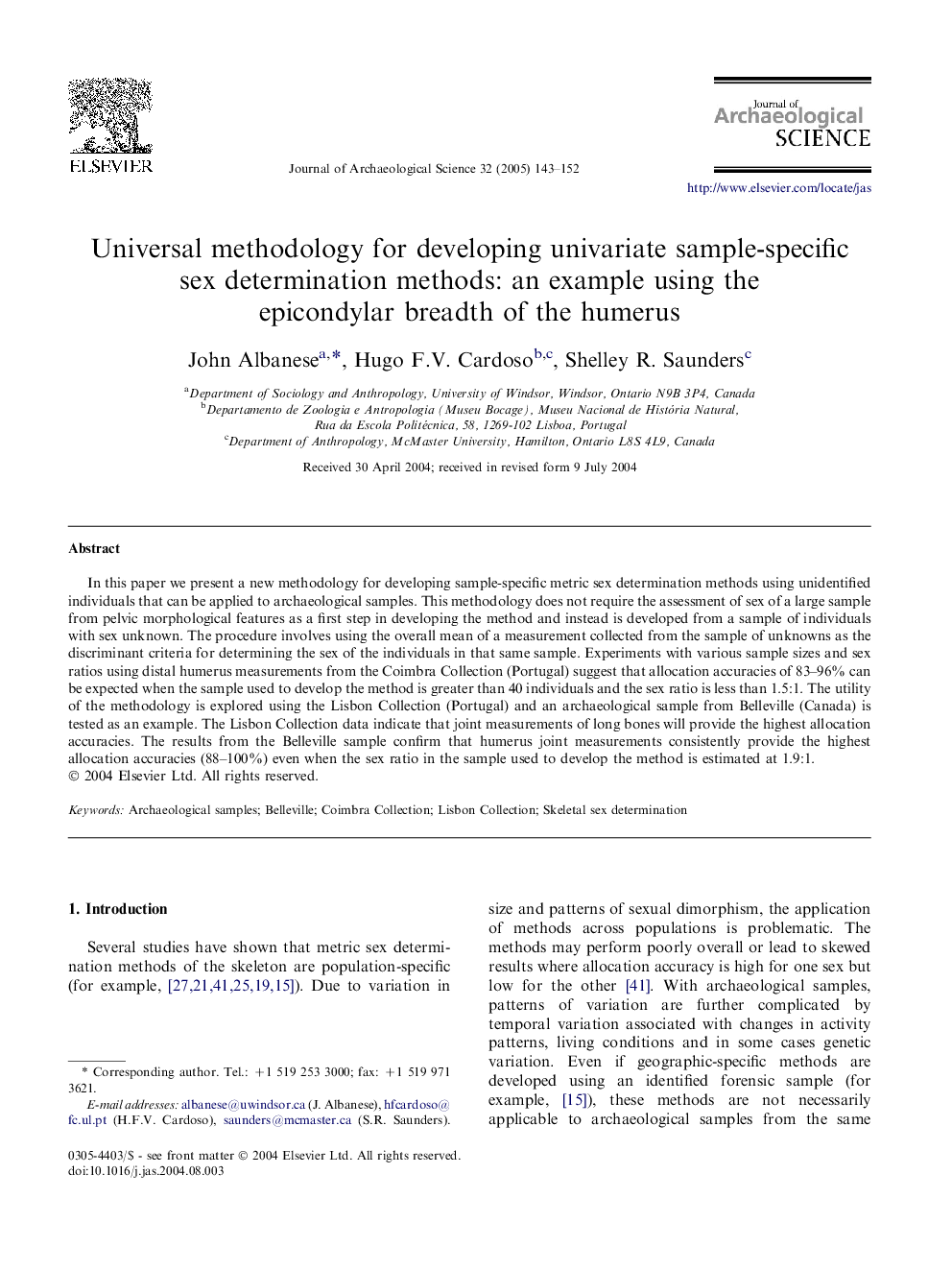| کد مقاله | کد نشریه | سال انتشار | مقاله انگلیسی | نسخه تمام متن |
|---|---|---|---|---|
| 10499509 | 943965 | 2005 | 10 صفحه PDF | دانلود رایگان |
عنوان انگلیسی مقاله ISI
Universal methodology for developing univariate sample-specific sex determination methods: an example using the epicondylar breadth of the humerus
دانلود مقاله + سفارش ترجمه
دانلود مقاله ISI انگلیسی
رایگان برای ایرانیان
کلمات کلیدی
موضوعات مرتبط
مهندسی و علوم پایه
مهندسی مواد
دانش مواد (عمومی)
پیش نمایش صفحه اول مقاله

چکیده انگلیسی
In this paper we present a new methodology for developing sample-specific metric sex determination methods using unidentified individuals that can be applied to archaeological samples. This methodology does not require the assessment of sex of a large sample from pelvic morphological features as a first step in developing the method and instead is developed from a sample of individuals with sex unknown. The procedure involves using the overall mean of a measurement collected from the sample of unknowns as the discriminant criteria for determining the sex of the individuals in that same sample. Experiments with various sample sizes and sex ratios using distal humerus measurements from the Coimbra Collection (Portugal) suggest that allocation accuracies of 83-96% can be expected when the sample used to develop the method is greater than 40 individuals and the sex ratio is less than 1.5:1. The utility of the methodology is explored using the Lisbon Collection (Portugal) and an archaeological sample from Belleville (Canada) is tested as an example. The Lisbon Collection data indicate that joint measurements of long bones will provide the highest allocation accuracies. The results from the Belleville sample confirm that humerus joint measurements consistently provide the highest allocation accuracies (88-100%) even when the sex ratio in the sample used to develop the method is estimated at 1.9:1.
ناشر
Database: Elsevier - ScienceDirect (ساینس دایرکت)
Journal: Journal of Archaeological Science - Volume 32, Issue 1, January 2005, Pages 143-152
Journal: Journal of Archaeological Science - Volume 32, Issue 1, January 2005, Pages 143-152
نویسندگان
John Albanese, Hugo F.V. Cardoso, Shelley R. Saunders,